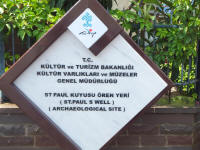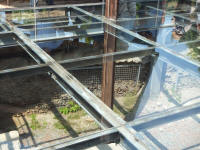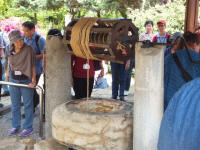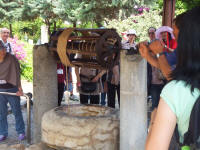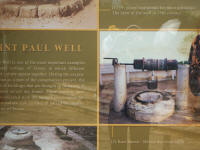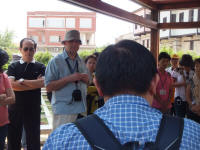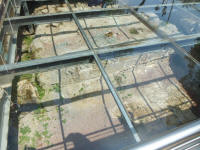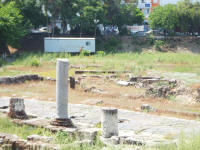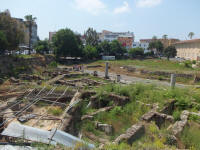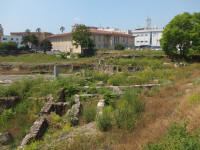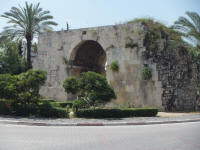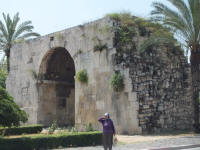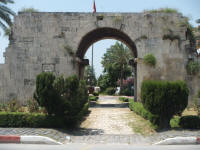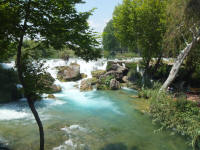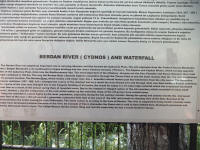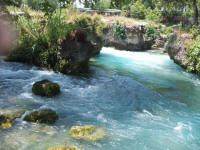
Alex Tang
Articles
- General
- Theology
- Paul
- Karl Barth
- Spiritual Formation
- Christian Education
- Spiritual Direction
- Spirituality
- Worship
- Church
- Parenting
- Medical
- Bioethics
- Books Reviews
- Videos
- Audios
- PhD dissertation
Spiritual writing
- e-Reflections
- Devotions
- The Abba Ah Beng Chronicles
- Bible Lands
- Conversations with my granddaughter
- Conversations with my grandson
- Poems
- Prayers
Nurturing/ Teaching Courses
- Sermons
- Beginning Christian Life Studies
- The Apostles' Creed
- Child Health and Nutrition
- Biomedical Ethics
- Spiritual Direction
- Spiritual Formation
- Spiritual formation communities
- Retreats
Engaging Culture
- Bioethics
- Glocalisation
- Books and Reading
- A Writing Life
- Star Trek
- Science Fiction
- Comics
- Movies
- Gaming
- Photography
- The End is Near
My Notebook
My blogs
- Spiritual Formation on the Run
- Random Musings from a Doctor's Chair
- Random Sermons from a Doctor's Chair
- Random Writings from a Doctor's Chair
- Random Spirituality from a Doctor's Chair
Books Recommendation
---------------------
Medical Students /Paediatric notes
Tarsus
AC 21:39 Paul answered, "I am a Jew, from Tarsus in Cilicia, a citizen of no ordinary city. Please let me speak to the people."
Tarsus, best known as the home of the Apostle Paul, was the principal city of
the eastern Cilician plain. A city renowned in antiquity as a center of culture
and learning, Tarsus was visited by such figures as Julius Caesar, Mark Antony,
and Cleopatra. Recent excavations have uncovered more remains of the city from
Hellenistic and Roman times, including a paved, colonnaded street.
Location and History
Tarsus, the capital of the ancient province of Cilicia, is located near the
eastern Mediterranean coast of Turkey. Situated today 10 miles inland from the
sea, Tarsus served as a port city because the Cydnus River passed through Tarsus
on its way to the sea. The river was navigable by ships from the Mediterranean
coast to Tarsus. Lake Rhegma, a lagoon near the Mediterranean coast into which
the river flowed, served as the harbor for Tarsus. During the 6th century C.E.,
Emperor Justinian moved the course of the Cydnus River to the east of Tarsus,
while leaving several minor branches of the river to flow through the city.
The city of Tarsus belonged to the region of Asia Minor known as Cilicia.
Ancient Cilicia was composed of two parts, Cilicia Pedias (“flat” or “smooth”
Cilicia) and Cilicia Trachaei (“rough” Cilicia). Cilicia Pedias was a fertile
plain in the eastern part of the region, whereas Cilicia Trachaei was a rugged,
heavily forested mountainous region in the western part, dominated by the Taurus
Mountains.
Tarsus, the major city of Cilicia Pedias, was located just south of the Cilician Gates, the main pass through the Taurus Mountains. Through this pass ran the major road connecting Syria to Asia Minor, thus providing Tarsus access to trade and travel over land as well as over the Mediterranean. The earliest settlement at Tarsus was likely at Gozlu Kule, a tumulus on the southeast side of modern Tarsus. Excavations under the direction of Hetty Goldman of Princeton University before and immediately after World War II at the tumulus discovered evidence that the site was occupied from Neolithic to Islamic times.
At least as early as the 3rd millennium B.C.E., a fortified town existed at the site of Tarsus. According to Hittite records, during the 2nd millennium Tarsus (known then as Tarša) was one of the important cities, and possibly even capital, of the country of Kizzuwatna (ancient Cilicia). The Sea Peoples, during their invasion and conquest of the region, destroyed Tarsus around 1200 B.C.E., but the city was subsequently refounded by Greek settlers. During the 9th century, all of Cilicia came under the control of the Assyrians. Later the Persians controlled the region, including Tarsus. In 333 B.C.E. Alexander the Great conquered Cilicia and defeated the Persians. His visit to Tarsus almost ended disastrously for him when he became seriously ill as a result of bathing in the cold waters of the Cydnus.
After the death of Alexander in 323 B.C.E., Tarsus came under the rule of the Seleucids, who gave the city a new name—Antioch on the Cydnus. By 67 B.C.E., Rome had taken control of the area and made Tarsus the capital of the province of Cilicia. Cicero lived in the city from 51 to 50 B.C.E., when he served as proconsul (governor) of Cilicia. In 47 B.C.E. Julius Caesar visited the city, which Tarsus changed its name to Iuliopolis in his honor.
A few years later, in 41 B.C.E., the city was the site for the famous rendezvous between Mark Antony and Cleopatra. Cleopatra, dressed like Aphrodite, sailed up the Cydnus on a barge to meet Antony, who was visiting the city. Under the Romans, Tarsus prospered and was a city of culture and learning.
Paul
the Apostle, the most famous citizen of the city, reportedly described Tarsus as
“no ordinary city” (Acts 21:39), a modest description of the city that Strabo
described as having “surpassed Athens, Alexandria, or any other place that can
be named where there have been schools and lectures of philosophers” (Geography
14.5.13). During the 2nd and 3rd centuries, several Roman emperors visited
Tarsus and bestowed various honors on the city. After the Romans, the city was
controlled by Byzantine, Arab, Seljuk, and Ottoman rulers.
Biblical Significance
In none of Paul’s letters contained in the New Testament does he ever mention
Tarsus as the place of his birth. That information comes from the book of Acts,
which several times names Tarsus as Paul’s hometown (Acts 9:11, 30; 11:25;
21:39; 22:3). According to Acts, Paul left Tarsus and was educated in Jerusalem,
studying under the famous Jewish teacher Gamaliel (Acts 22:3). After his
conversion/call to Christianity, he returned to Tarsus for a brief period prior
to becoming the important missionary of the Christian church. While the accuracy
of the information in Acts about Paul’s stay in Jerusalem has been seriously
questioned by some scholars, there is no reason to doubt the tradition of Tarsus
as his birthplace and possibly the place where he spent all his formative years.
The only other reference to Tarsus in biblical literature is in 2 Maccabees
4:30, which tells that the citizens of Tarsus, along with the citizens of Mallus
(east of Tarsus), revolted against the Seleucid king Antiochus IV “because their
cities had been given as a present to Antiochis, the king’s concubine.” Some
readers have tried to identify Tarsus with the city of Tarshish, mentioned
several times in the Bible (e.g., Jonah 1:3; Jer 10:9; Ezek 27:12). The location
of Tarshish is uncertain. The most likely suggestion is that it refers to a port
city in Spain and not to Tarsus.
Site Visit
Because the modern city of Tarsus is built over the location of the earlier
phases of the city, little can be seen today of the ancient Hellenistic and
Roman structures. Whatever ancient ruins may still exist lie mostly unexcavated
under the modern city. (For example, the foundation of a 1st-century-C.E. Roman
hippodrome lies under part of the grounds of the Tarsus American College, whose
campus, not far from the town center, is located on the periphery of the slopes
of Gozlü Kule; across the street, some exposed portions of a Roman theater are
visible.) The tumulus of Gozlü Kule, where the earliest archaeological work at
Tarsus was performed, has now been planted with trees and is used as a park.
In the middle of a traffic circle in Tarsus on the road to Mersin is a Roman gate called, variously, Kancik Kapïsï (“Gate of the Bitch”), Cleopatra’s Gate, and St. Paul’s Gate. The gate actually has no historical connection to either Cleopatra or Paul. Rather, it is likely a 4th-century C.E. gate set in the ancient city walls to provide access to the harbor.
North of the gate, in the Camii Cedid district of the city, is the St. Paul’s
Well. Tradition claims that Paul used this well frequently and that it has
special curative powers. The well, which is claimed to be over 100 feet deep, is
supposedly built where Paul’s house once stood. Although there is no historical
basis for these claims, the well apparently dates back at least to Roman times,
since about three feet underground it is surrounded by Roman paving.
Source: STM Turkey Study Trip 2013 booklet
30 May 2013
more on Bible Lands


